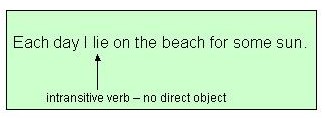Confused Words: lay / lie
Lay is a transitive verb that means to put something or someone into a reclining position. Transitive verbs are always followed by a direct object. Thus, lay must always be followed by a noun or pronoun that answers "whom" or "what" to it -- a receiver of its action.
Correct

Since lay takes a direct object in this sentence (clothes), it is the correct verb to use here.
Incorrect

Since lay does not have a direct object in this sentence, it is not the correct verb to use here.
Lie is an intransitive verb that means to put oneself in a reclining position.
A verb is intransitive when it has no direct object. Since lie is intransitive, it may never be followed by a direct object (a noun or pronoun that answers "whom" or "what" after an action verb).
Correct

Incorrect

Since clothes functions as the direct object in the above sentence, the verb lie is incorrect. The correct verb to use is lay.
Tense of lie and lay
Using "I" as a subject, one can form the tenses for these two verbs as follows:Present Simple past Present participle Past participle
I lay (something) I laid (something) I am laying (something) I have laid (something) I lie I lay I am lying I have lainAs you can see, when it forms its tenses, the verb lay works just like the verb pay:
Present Simple past Present participle Past participle
I lay I laid I am laying I have laidI pay I paid I am paying I have paid
However, the verb lie is very irregular.
In fact, what makes these two verbs especially tricky is that the past tense of lie looks exactly like the present tense of lay.
Present Simple past Present participle Past participle
I lie I lay I am lying I have lainI lay (something) I laid (something) I am laying (something) I have laid (something)
Example - lie, present tense

Example - lie, past tense

This similarity between the two verbs causes much confusion in their use.
Remember: Lie is intransitive and, therefore, is never followed by a direct object.
Lay is transitive and, therefore, is always followed by a direct object.
AND
The past tense of lie looks exactly like the present tense of lay.
No comments:
Post a Comment